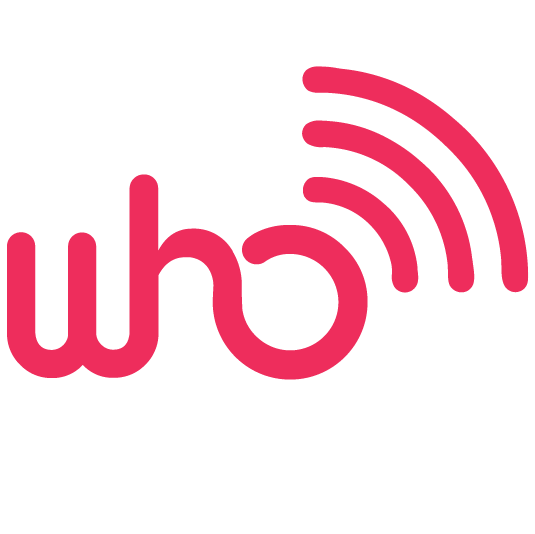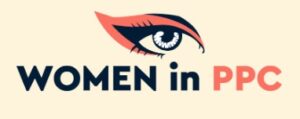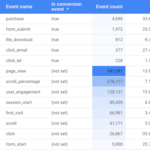Presented at the virtual #CSCLive Conference in June of 2021 by Jonti Bolles of WHO Digital Strategy.
- Local Map Pack Finder and Mobile
- Want To Rank For A Location?
- Content Strategy Plan for Local
- Pages By Location Plan
- Local SEO Schema
- Resources
Follow Along with the full Webinar Transcript:
[00:02] – Jonti Bolles
Hey, welcome to Reinventing Local SEO. I’m Jonti Bolles. I’m the CEO and founder of White Hat Ops Marketing, and we’ve been invited by Content Strategy Collective Live to talk a little bit today about things that are impacting local SEO. Looking forward to all the great sessions today. We’ve been in SEO or I’ve been in SEO for over 15 years, so some of our experience and we’ll be talking about the things we’ve seen changing and how we’ve reinvented ourselves and our agency to address the best needs of our clients. And how we stay current with all the changes. Today we’ll talk about why reinventing. Speak a little bit about how mobile-first has impacted local search, how structured data plays into that, and some of the competitive research you can do to develop your content plan for local SEO.
[01:07] – Jonti Bolles – Reinventing
Let’s get started. All right, so I talk a lot about reinventing versus innovation. This is a concept. If you’re interested, you can find out a little bit more about it from chiefreinventionofficer.com. True innovation is out of the reach of most. So a lot of people talk about innovating. Well, we’ll just innovate! We can make something new! But that’s really out of scope, by budget or ability. But if we’re able to just improve one thing or improve on the core competency, that’s much more approachable. And we found that to be something that we could align with for how search changes over time.
So if we keep improving one thing day by day, and as the algorithms and search strategies change, then we can keep up and or stay ahead of that with our reinvention. So let’s get started and talk a little bit about what that means in local SEO or Location Specific Intent, when you look at it, is pretty stable. But in the scheme of things, it is still fairly new to search. When we typically type in a search query, something very simple, maybe we want to learn to rock climb. Then you can see an example here where we get some snippets at the top. We get people also ask, and then finally we get search results, with organic search results below that. I didn’t get any ads this time, but there are a lot of things that can get in the way before we get down to organic search results. But if we change that with an intent. So instead of learn to rock climb, we can make a simple query of “learn to rock climb near me”. We haven’t even added a true location as a city or state yet, but we just changed our intent.
[03:07] – Jonti Bolles – Local Search Pack
So now Google Search Crawlers understand that I’m wanting to do something near me. Well, now we have a local map pack. I’m sure you’re all familiar with a local map pack. There’s a Google map at the top. There are three listings that are kind of the local three-pack. And then we move into the people also ask below that and then further down a page might be our organic search listings, but that simple query changed the intent. So we’ll talk a little bit about intent today and how that really affects our local search strategy.
[03:48] – Jonti Bolles – Local SEO Proximity
Part of our local search strategy really is addressing mobile, right? So mobile-first, everything is now being indexed and/or ranked by mobile-first indexing. This was something that rolled out over several years but is now fully rolled out. You can still have your desktop search results and indexing, but when Google is actually indexing and ranking the sites, now it is fully transferred over to mobile-first. This is important because we know that when people get ready to buy or go or visit or do something, easily over 50% of their local searches are on a mobile device. We’re starting to be even maybe a voice-enabled or smart assistant. But that number has plateaued a little bit from what we understand with this past year. But it’s still for local searches or leading into a business or a place or a purchase that mobile devices are the highest percentage of where those searches are occurring. So mobile-first did impact our local search, right? So many of us had with our devices now, the way that those search results are impacted includes proximity. So even though you may be trying to rank in a certain place or for local search, it’s very dependent upon the device that someone’s on, where their actual proximity is to you or not, and the relevance of that query. So let’s talk a little bit more about how that plays into the overall strategy.
[05:32] – Jonti Bolles – Local SEO Tools
Some of you are familiar with a lot of tools, maybe for measuring and helping support your local SEO strategy. Whitespark is one such tool. Darren Shaw does a survey as part of that business and organization every year where he reaches out to local professionals, and SEO professionals that have some authority in the local SEO space. And they asked him to fill out a survey based on ranking factors. There are a ton of questions in it and he gets back some great data. So we’ll use that data here to talk a little bit about the local pack finder. So these are not official Google results, but these are survey results based on a survey of people that are experienced with clients, and they’ve worked on their accounts for a significant amount of time. So what we can see here is that this talks about the local pack with the finder, right? So again, those were those with a local intent. What’s showing up and what’s impacting getting into the local pack?
[06:40] – Jonti Bolles – Local SEO Ranking Factors
We see that the largest signal from that group is Google My Business or GMB. Google My Business truly is a very high establishing factor for that online visibility. But again, whether you can show up in that local pack is based on your proximity, relevance, and prominence. We also see things like reviews on-page, and SEO links, all of those things start to contribute to where you might be placed in local pack finder. So if you were really looking at this, then you might be thinking, well, really, I just need to spend my time and the majority of my time on optimizing my Google My Business listing. Unfortunately, it’s not that easy.
[07:24] – Jonti Bolles – Google Business Profile
We often say in SEO that there is no easy button. We just keep adding things on. So you still have to kind of take care of your Google My Business listing. And even though Google My Business continues to roll out new features kind of quite actively this last year, especially in the pandemic and post-pandemic time, but there’s still a little lack of control of what you’re actually able to do there. Yes, you can fill out your description, you can choose your categories, and you do have a small amount of control over your service area, but that’s only really on what you input. It depends on someone’s proximity to how that actually plays out for you. And then reviews are critical, but you’re limited in control there and citations and some other things. So we’re not going to focus today on Google My Business, but we do want to say that it is part of the local pack, and we do want to make sure that you are completely filling it out consistently.
[08:31] – Jonti Bolles – Local Pack
So let’s take a look at the next part of the survey. Again, by Whitespark. When they ask those same local SEO professionals what they felt was the most impact in their local organic search results and their rankings there. Then on page, where 32% of those people said that on-page was the highest impact on their local SEO efforts for organic rankings. So the website is the one thing that you also have the largest control over. So it makes sense then to spend a significant amount of time with on-page optimization for local SEO. Yes, Google My business features are expanding, but they’re still limited. Links are also part of this, and you can see behavioral citations. But then that Google My Business in this case actually dropped all the way down to 7%. So I think we’re going to look a little bit more at on-page. So what does that mean? To improve your rankings in the local pack, in this case, if you want to improve your rankings here, then we want to make sure that we’re sending all the right signals. You’re filling out your Google My Business listings and it’s syncing with a knowledge graph, and so that you can improve your rankings here. And what we often see is the people in these cases. This very example, somebody that was in the highest local pack will also be very present, if not top, in the organic search results.
[10:10] – Jonti Bolles – Local Citations
In addition to all of that, we would be remiss if we didn’t at least mention that you also need to make sure that you’re working with your citations and other reviews. So citations are built in to bring in a little more context to your business organization or local SEO. So we do want to mention it just to make sure, I think everybody’s pretty aware by now that NAP or Name, Address, and Phone must be consistent. Now, this was much more important in the past, but again, as we’re starting to develop entities and structured data, Google is actually, you know, don’t get hung up on things like Drive spelled out or Drive abbreviated. Google starting to understand those things, but you do want to make sure that your name and your information about your business are consistent. So name, address, phone number, there have been some changes this past year, maybe there were personnel changes, maybe there were location changes. So keep all of those consistent and it’s a good time to go through and audit all of your different citations out there besides just, maybe your Google My Business listing or your Bing Listing. Okay. So if we think about those citations, they’re a little bit about improving E.A.T. So we’re starting to hear a lot of talk about local SEO and E.A.T. How does E.A.T or expertise authoritativeness and trustworthiness, which is what the Google greater guidelines suggest, are part of our ranking factors. That if citations can improve E.A.T or if other sources corroborate those details, then it’s improving your expertise or your trustworthiness and your authority in some cases. So for example, if Yelp and Angie’s List and several other citations, all say that this is the name of your company, this is the certification that you have, you have good reviews and listings, then it helps corroborate those details. And why should Google disagree at that point, right?
[12:23] – Jonti Bolles – Local Schema Markup
So one of the ways we can help with all of those signals is by Schema Markup. Schema Markup is something you have control over on your own website. It’s getting easier and easier to implement. It used to be something that maybe you had to reach out to a developer with. Now we’re finding that you can implement Schema Markup through plugins. If you do have a developer, it’s a great way to kind of continue to test that and build it in at a much more robust scale. So things that we can add more info about through Schema include your local business, your organization, person or persons that are there, authors, events, and there’s quite a bit more. But all of these have in some way an impact on your local business and the information and context about your business. One of the ways that we’re starting to realize that is through entities. Entities is just another layer, a little more detailed around Schema Markup. Schema Markup is marking up types or properties. But an entity is defined as a well-defined thing or concept. It’s singular, it’s unique. An entity is something that Google is starting to develop now with machine learning. It talks about entities as a person, and a location is an entity.
[13:54] – Jonti Bolles – Local Entities
An organization can be an entity, an event, or a thing. All of these can be entities. But Google when they talk about this, really means topics. So we’ll see a little bit over that. You won’t always see entity mentioned, but when you see topics that Google is bringing to light, like search topics and Google Trends, they’re really mentioning entities. We’ll get into that. So how do entities and structured data fit together? So structured data is really an entity-driven model. It’s a way to organize the data regardless of language or device. That’s important because as an entity, it’s no longer driven by being in a certain language or coming from a certain device. Structured data in the past, if we think about it, is textual data, right? So image files or videos or audios, are all the things that can be structured or organized.
[14:54] – Jonti Bolles
And then these were layered in and delivered either through XML or JSON data or maybe even sensor data from a location. And all of that gets put into the metadata of your on-page or HTML. And then that is crawlable so that Google can start to distinguish that structured data and build it into its entity model. These entity relationships, as I mentioned before, are language agnostic, meaning that as Google is trying to organize all the world’s information and it’s able to translate that data, we have to be sure and give it as many contextual signals as possible, right. So the local schema, some of the things that your local organization needs to include are your address. Pretty simple, right?
[15:58] – Jonti Bolles – Local Entity Examples
Area served can be your brick and mortar business, or if you’re providing services to your clients and delivering to them. Maybe if you’re a plumber or provide attic insulation, your brand, this is your name. Simple things like founding date, giving you a little bit more history, a little bit more authority, right. Opening hours are very important in this time where not only are we seeing searches and local searches for near me, but now we’re seeing an added element of open near me. People want to know if something is still open if there were received awards or certifications or licenses, then those are things that, again, help kind of establish the E of that EAT in SEO. Or if you’re a member of certain organizations. So why is this important? So if they develop enough entity information and entity ranking starts to rank what is the best of them, then we won’t require links in the same way. I know it might be a little scary to say that links may not be as heavily weighted as they were in the past, but as the information starts to kind of continue to be developed and indexed. Entities and how it relates one entity to another and set that context, and citations in their own way, links will happen in a little bit different paradigm or authority shift. So what does that mean? Multiple entities can be referenced on the same page. You can have linking entities that create this context. For example, one of the things we’re starting to see with those entities is that they need that context of sameAs. So in addition to just listing things like your address, name, brand, and founding date, we also want to be able and give the search crawlers the information they need and sameAs.
[18:09] – Jonti Bolles
So this is a markup that is now being included. And specifically, if you have for that entity a Wikipedia entry or Wikidata, Crunchbase, Facebook, all of these things that have an authority and can be referenced to where it’s the same as that listing, then it starts to put that context around your page and your local listings, right.
[18:38] – Jonti Bolles – SameAS
So look at sameAs and start learning a little bit more about an entity and think about that as the topics of your site and the topics of your business and search. We want to completely cover those topics and set those entities as categories. Set those things that really tell us all the information that really anchors what your business is about, where the locations are. And if you do this, then you’re going to start to be just those many steps ahead of your competitors. So let’s talk about competitive research a little bit.
[19:15] – Jonti Bolles – Local SEO Topic Clusters
So those competitive topic clusters, right. So what are the topic clusters that make you locally relevant? If you want to rank for something, then you probably needed in the past, very clearly a page or a post on your site about that topic. That hasn’t really gone away. What we do understand is that in many ways we’ve overdone that in the past. But if we still want to be the best Texas installation company in Katy, Texas, which is just outside of Houston, then it’s probably okay to have several different pages. If you’ll notice that their location pages don’t actually mention Houston, but they are focusing on some of those surrounding areas, by default also their address, they are in Houston, but they’re reaching out and kind of developing these very contextual pages and they’re being smart about it, right. In this particular case, they’re actually writing content specific to each of those location pages.
So that’s still something that you have to consider is, are you writing a service page and how does it relate to your location? So if we search for services, we want to dive into variations. Now, this can be for you or this can be part of that competitive research, right. What services are you providing that you know you’re providing? But we use this often to look at what are the competitors looking at?
[20:44] – Jonti Bolles – Local SEO Service Page
What are the services they are offering? And is that something that we should be offering to our clients, or is it something that we can encourage them that maybe this is the next expansion that they want to build on as a new service offering or product offering? So you can look at not just a topic, but then you can look at the variations within that and you can start to see things there that are going to give you all the things that you can answer or what your competitors are answering about a topic. In this case, if it was attic insulation, we also want to make sure we’re covering attic insulation cost and if maybe the cost in one part of the country or area is different from another. So how are there seasonal changes around that cost? If is there attic insulation depth, is there something, again, seasonally or local that makes it different from describing why it would be important in the Houston or Katy, Texas area. And then some other things like our value. Or is cellulose a better material? So maybe if our client offers cellulose, but they don’t have any information about that on their site, we need to make sure because that is a differentiator for them. So competitive research around what your competitors are writing about, what they’re including, and then how that can inform also your local SEO strategy. All of this will help to build out a content strategy plan so that we can see it not just in the local pack, but in the information right below that and people also ask, is How can we answer those questions?
[22:25] – Jonti Bolles – Google Business Profile Categories
So maybe if someone didn’t find what they wanted right in the local pack, but they can start to kind of drill down and figure out what are other questions. This is a little bit part of that journey of the process, right? So we’ll look at related content, instant answers, and people also ask, even as far as local news to see if something is relevant and might be a post or part of that content strategy to, again, send signals about local intent. So one of the ways we also kind of do a little competitive research is we also want to monitor, we’re going to switch back now to Google My Business. Just wanted to share this resource also because we find it helpful. This is on Sterling Sky, another good agency that does a lot of research and pushing out content around local SEO. They also track category changes by month for Google My Business. So you want to keep current and use this to establish expertise. If you’re looking at those categories and Google My Business categories, you’re always going to choose a primary category, but then you might also list up to 20 categories and subcategories in there.
[23:41] – Jonti Bolles
So you want to look at those categories, and keep them current, but also realize these are areas for content on your site. It’s also where you want to look at your competitor research. What are your competitors using as their primary category? And then make sure if this is something that you want to compete directly on. If you’re in the same direction, same service, area, or product area, then use this to stay current on categories and then what your competitors are using for their categories and how it informs your content strategy. Finally, if we want to look at truly a local SEO strategy, we kind of have to have location pages. For some of you, it will be a simple contact us page with all of your information about your business and on that one simple page. And then also consistently, maybe in your footer or from your home page, you’re going to have information, again, about your name, address, phone number, and how to get in touch with you. But your location pages and your location plan are really going to be primarily separated from your services in some cases. Pages by location plan, probably our first thing is to go slow, don’t over publish, build one and get it right.
[25:04] – Jonti Bolles
If you’re rebuilding a strategy or reinventing a strategy right now, take your main page, whether it’s your contact us, and just rebuild it and go through all the steps, know the area that you’re targeting and build it into that context, right? And then we’ll look at don’t skip steps. So good old SEO is not that different from the niche of local SEO. You still have to do all the things on the pages.
[25:29] – Jonti Bolles – Local SEO On-Page
You have to get the right title tag, you have to get the right H1, you have to get subheadings, and you have to address the content and develop a full strategy around it. But for your location plan, there are some other things that you want to do. So in this case, this is REI’s example, the location page for Williston, Vermont, and you can see Williston is right in the title tag. They also tell you what’s available there in-store shopping and curbside pickup.
It’s clear what the store hours are, and how to get in touch with them on the phone, address, or get directions. And we can see a little bit more information. If you scroll down the page we just saw in the previous slide, you could see events that were happening there. And then further down the page, you can see actually very local information about Williston. So you want to don’t skip steps, know the area, and give all the user base info that they need. And then once you get this one page built out and you have a really well built out, then you may want to go back in and now we can start looking at how many times do we want to do this for other pages, right. How many other pages and other locations? It’s pretty simple. If you have multiple locations, then you’ll want to build one out for each location. If you’re trying to target multiple locations out of smaller, single stores or covering larger areas, then you want to be much more cautious about how many pages you build out.
[26:58] – Jonti Bolles – Location Pages
We don’t want to get into the habit of old strategies of building out a page for every targeted area. Really build one out for each location that you have and your service area around that location. When you’re building out that page, we want to go back and make sure that we’re wrapping it in the right schema, right? So on this REI Williston page, we can see that it has the local business Schema built right in and if you went a little further they could start adding entities for context.
[27:18] – Jonti Bolles – GBP UTM Tracking
Lastly, we’ll talk about how we can measure some of these things for success. So Google Insights is bringing us, rolling out new areas where we can see Google Insights, and how people discovered you, both in search and mobile and maps. So these will start to kind of be rolling out both since January. Starting to see them a little more robustly in some of our client’s dashboards now, but that will be the thing that we’re starting to focus on. We’ll also see that there are a lot of things that don’t show from the tools that we can normally measure. So you’re going to have to manually build in or work with some tools to find things that how you’re showing up in featured snippets or people also ask. And then one of the things you can do if you haven’t is to make sure that you’re adding good UTM tracking to all of those things that you do own. So there’s a great resource by Claire Carlyle where she talks about how she uses UTM tracking for all of her Google My Business listings and posts and different sections. And lastly, I want to say that what we’re researching now is a little bit around Speakable Schema so we talked a little bit about mobile, how it impacts local SEO and that people are speaking into their mobile devices or their smart assistance. Not everybody is eligible for Speakable Schema at this point.
[29:04] – Jonti Bolles
It’s really for publishers but it’s just something that we’re really looking at as, again, we’re Reinventing Local SEO. So putting it all together, we’re going to reinvent and look at structured data and how it impacts local SEO and develop competitive content by our local intent as well. We’ve added the resources for you here and we want to say thank you for letting us spend a little bit of time with you with local SEO.
If you have any questions, please reach out to WHO Digital Services and we look forward to you winning with your strategies of local SEO. Thank you.







